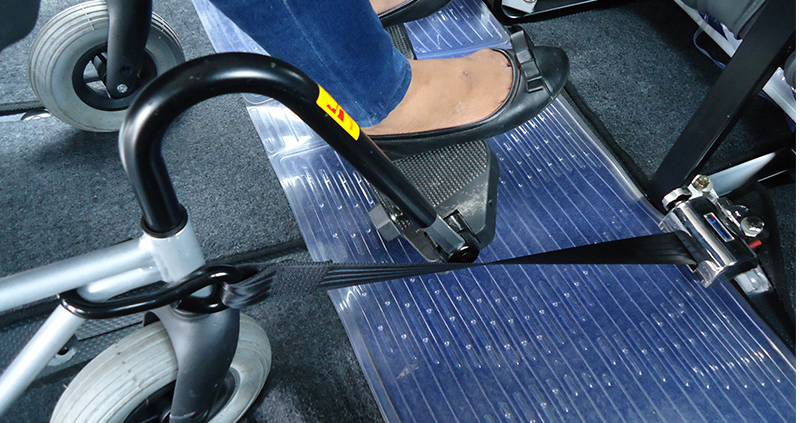Independence on the Road: What Equipment Do You Need?

The summer is a great time to take a vacation and explore the open road, but it’s always necessary to keep in mind the proper equipment and adaptations to keep you and your family safe. It’s important to know about these modifications and which ones may be right for you and your handicap accessible vehicle. Knowing which seat bases and restraints may be appropriate for your wheelchair accessible vehicle could make your road trip much more comfortable, relaxing and safe.
Assistance In and Out of the Wheelchair
Whether you will be driving or riding, seat bases allow easy access to and from the vehicle. There are a few types of power seat bases, the first is the four-way power seat base (also known as a transfer seat) that aids in transferring from or to the wheelchair or the vehicle seat and provides a motorized rotation and forward or back movement. The six-way power seat base is similar to the four-way, plus a motorized swivel. The six-way is extremely useful for individuals with limited muscle control in the upper extremities. There is also a removable seat base, which is a detachable seat that allows for easy conversion of the driver’s station for a driver using a wheelchair. Don’t let the task of transferring from your wheelchair to your vehicle stop you from getting out there!
Transferring from Wheelchair
If you choose not to transfer from wheelchair to seat without assistance, there are plenty of options for you to still get on the road, yet remain safe while on it! Lifts and ramps allow you to move directly into the vehicle without leaving your chair. If you feel as if you’re sitting too high in your wheelchair, a power pan will assist by automatically lowering the vehicle floor in the driver’s station. Wheel wells are installed in the floor as well to lower the wheelchair as well and also can include restraints in the wells to lock the wheelchair into place.
Securing the Wheelchair
Proper restraints for a wheelchair just as important to use as wearing a seatbelt, and can be just as lifesaving as well. There are two types of wheelchair restraints to secure your wheelchair while you are riding or driving. Manual restraints, or “tie-down” restraints, require caregiver assistance to ensure proper securement and safety. The other type of wheelchair restraint is the electric, or power restraint, which requires no assistance in use but involves mounting a device on the floor of the van and a device on the bottom of the wheelchair. When these devices are properly fitted they lock into place, creating an audible click, and sometimes use a buzzer and/or light to ensure safe locking. The last of the restraints necessary to ensure safety are the torso restraints, which may be used along with lap belts and wheelchair restraints to ensure top-notch security. To determine which combination of safety features is right for you and how you can install, or purchase vehicles with these features contact your local NMEDA dealer to ensure your safety on the road!
The National Mobility Equipment Dealers Association (NMEDA) is an advocate for mobility and accessibility for drivers with disabilities. If you need help with converting or buying a handicap accessible car, truck or van, please consider one of our mobility equipment dealers. Find a dealer near you: www.nmeda.org/dealerlocator
